Soy Sauce Business
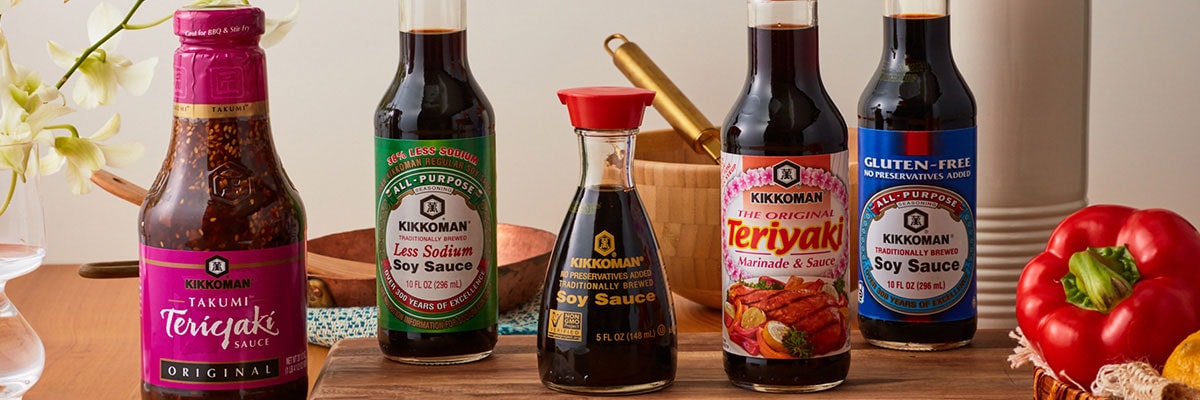
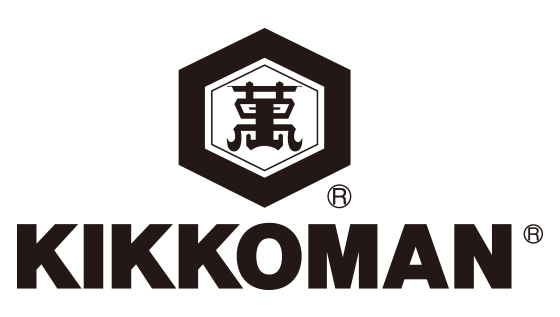
Kikkoman has been dedicated to preserving the exquisite taste of soy sauce, which has been nurtured through traditional Japanese fermentation and brewing techniques, while making necessary improvements to align it with the demands of the time.
Over half a century has passed since the establishment of its U.S. marketing company in 1957. Today, Kikkoman Soy Sauce is produced in eight overseas plants and enjoyed in over 100 countries.
As an all-purpose seasoning that goes well with all kinds of food, Kikkoman Soy Sauce creates new tastes through fusions with other culinary cultures, spreading joy and smiles to dining tables around the world.
Origin and Development of Business
Quality-Conscious Efforts of Over 350 Years
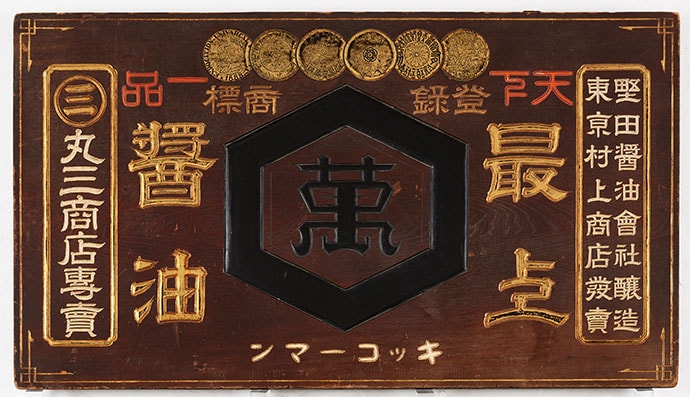
Kikkoman “Honjozo” (traditionally-brewed) Soy Sauce production has a history of over 350 years, dating back to the mid-17th century (in the beginning of the Edo Period), in the city of Noda, Chiba Prefecture. The Kanto Plain blessed with high-quality soybeans, wheat and an abundance of pure water provided the ideal foundation. In 1917, the soy sauce brewers in Noda and the neighboring area merged their businesses and formed Noda Shoyu Co., Ltd., which is the predecessor of the current Kikkoman Corporation. They didn’t settle for what they had. They worked collaboratively and shared secret technique to supply premium soy sauce consistently through their expertise and unity. Soy sauce has become deeply ingrained in Japanese cuisine as a traditional seasoning. That’s why Kikkoman has continued to preserve its quality while improving it further.
During WWII and its aftermath, the severe food shortage made it challenging to produce “Honjozo” (traditionally-brewed) soy sauce. Despite these circumstances, Kikkoman, with its unwavering commitment to quality, developed new technologies to meet domestic demand and preserved the traditional method of brewing soy sauce, which lies at the heart of Japanese culinary culture.
In 1931, Kikkoman established the Kansai Plant (currently the Takasago Plant) in Takasago City, Hyogo Prefecture, primarily to meet the demand in Western Japan. In 1987, the establishment of the Chitose Plant (currently Kikkoman Hokkaido) allowed Kikkoman to supply the Hokkaido region and extend its delivery of soy sauce across Japan.
Variety of Food Expanded with Soy Sauce
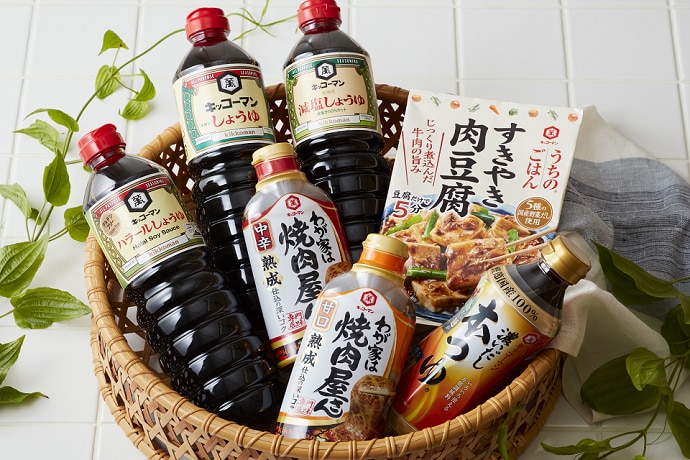
While maintaining a strong commitment to quality, Kikkoman has continuously developed soy sauce with a new value that accurately reflects the demands of the time. This includes products for health-conscious individuals, such as less sodium soy sauce that retains the flavor and taste of traditional soy sauce while reducing salt content. Another example is Halal soy sauce, developed specifically for Muslim consumers, by a unique method that inhibits alcohol fermentation.
Kikkoman, with its forward-looking approach, has been at the forefront of developing new seasonings that align with changing lifestyles. As the number of nuclear families and single-person households increased, there was a growing demand for preparing food quick and easy. In the late 1950s, Kikkoman introduced a Japanese-style mixed seasoning. This convenient seasoning, which was a pioneering culinary product at that time, allowed anyone to easily create the traditional Japanese taste of soup stock made from a combination of bonito and kelp, along with various condiments like soy sauce and mirin. New products added to the lineup have enriched the culinary variation, such as soy sauce-based Japanese seasonings “Tsuyu” and “Tare,” followed by the “Uchino Gohan” series, enabling anyone to make delicious Japanese dishes easily. Kikkoman will continue to promote and propose new dietary lifestyles aligned with the times and cultures through sincere and meticulous craftsmanship, supporting the well-being of mind and body.
Sales Center
KIKKOMAN FOOD PRODUCTS COMPANY Tokyo Head Office
| Address | 2-1-1 Nishi-Shinbashi, Minato-ku, Tokyo 105-8428, Japan |
|---|---|
| Tel | +81(3)5521-5131 |
Production Center
| Address | 110 Noda, Noda-shi, Chiba 278-0037, Japan |
|---|---|
| Tel | +81471235134 |
| Address | 1-1-1 Niihama, Arai-cho, Takasago-shi, Hyogo 676-8510, Japan |
|---|---|
| Tel | +81(79)442-2131 |
| Address | 1007-53 Izumisawa, Chitose-shi, Hokkaido, Japan |
|---|---|
| Tel | +81(123)28-3888 |
R&D and Product Development Center
| Address | 338 Noda, Noda-shi, Chiba 278-0037, Japan |
|---|---|
| Tel | +81(4)-7123-5511 |
North America
Origin and Development of Business
Being Recognized as “ALL-PURPOSE SEASONING”
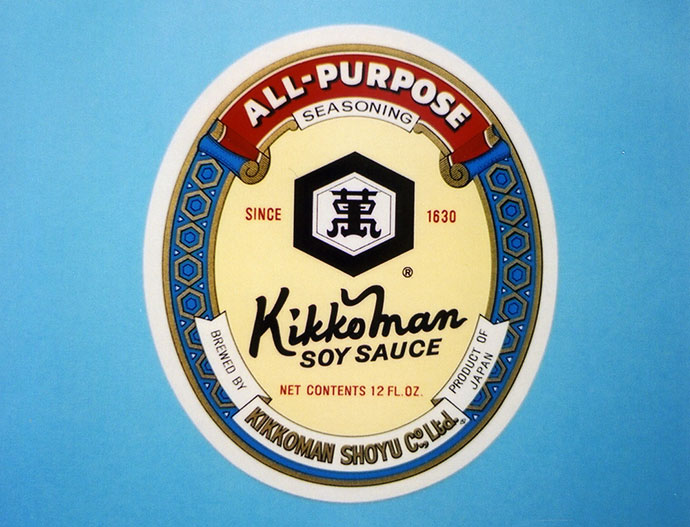
It was after World War II that Kikkoman began a full-scale export of its soy sauce to overseas markets, starting with the United States. After seeing many Americans who visited Japan had grown to love the taste of soy sauce, Kikkoman was convinced that soy sauce had the universally appealing deliciousness. In order for the Americans to use Kikkoman Soy Sauce regularly in their daily meals, soy sauce had to be recognized as a versatile seasoning for various dishes, instead of being known as a condiment exclusively for Japanese dishes. That’s why Kikkoman began labeling the soy sauce for export with “ALL-PURPOSE SEASONING” in 1957. This expression, meaning ‘multipurpose condiment’ being printed on the product labels to this day, perfectly describes the soy sauce’s flavor enhancing qualities, making it a clear catchphrase for this seasoning to be penetrated into the market.
“Kikkoman”—A Synonym of Soy Sauce
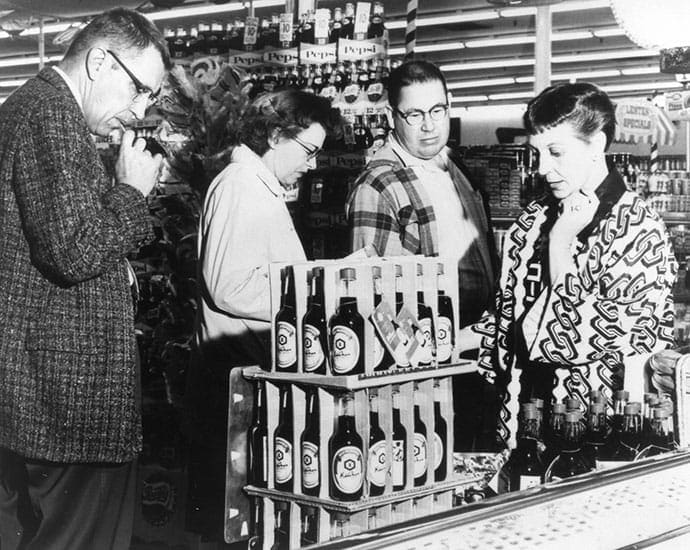
It was 1957 when Kikkoman established a marketing company in San Francisco to fully break into the U.S. market. Soy sauce became rapidly popular among Americans after Kikkoman marketed it with a catchphrase “Delicious on Meat” and advertised how good it tastes with meat dishes through in-store demonstrations at supermarkets. With new recipes tailored to American preferences, Kikkoman introduced the delicious fusion of local cuisine and Kikkoman Soy Sauce, which has gradually turned into the local specialty. In response to the expanded demand, full-scale production of Kikkoman Soy Sauce began locally in 1973 at a plant opened in Walworth, Wisconsin. Today, Kikkoman supplies soy sauce across the United States from this plant and another plant opened in Folsom, California, which began operation in 1998. Kikkoman products have certainly become an integral part of the American food culture, generating new value and making the name “Kikkoman” a byword for soy sauce.
“Teriyaki Sauce” Born from the American Food Culture
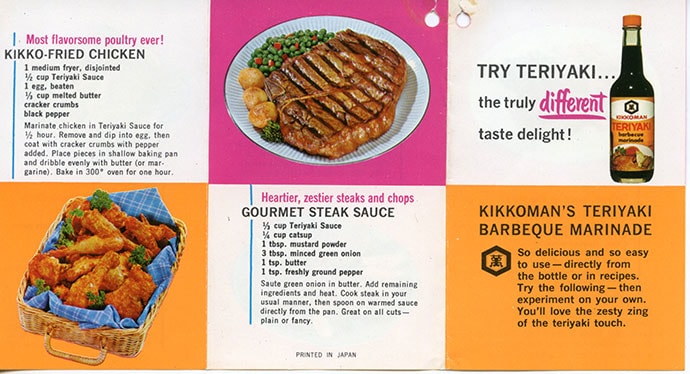
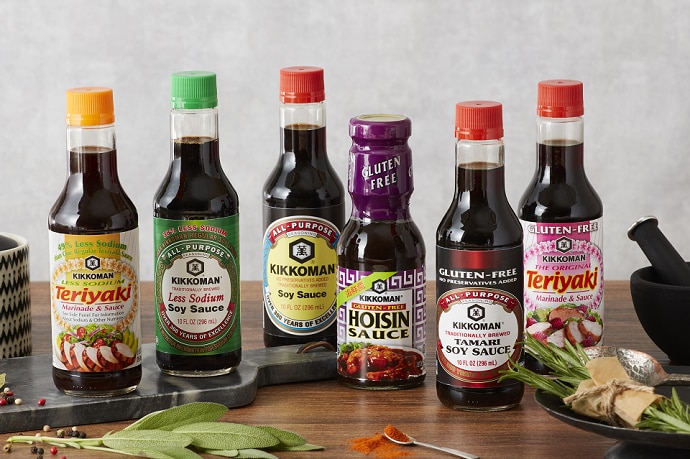
Kikkoman has introduced a variety of products aligned with the American food culture and changing needs of the times. The “Teriyaki Sauce” available since 1961 was launched as BBQ sauce flavored with spices in the United States where people enjoy al fresco cooking and dining. This product was developed with input from local employees in the U.S., hoping to deliver the great Teriyaki experience for everyone. Since its launch, the Teriyaki sauce has rapidly gained recognition, expanding its popularity over the course of half a century and being American’s favorite to this day.
Kikkoman has been expanding its products tailored to the North American food culture and the needs of society. The new lineup includes less-sodium soy sauce, stir-fry sauce (ideal for meat and vegetables), as well as recent additions of gluten-free soy sauce and Umami Joy Sauce, a soy and wheat -free tomato-based sauce.
Sales Center
| Address | 50 California Street, Suite 600, San Francisco, California 94111, U.S.A. |
|---|---|
| Branches | San Francisco, Los Angeles, New York, Chicago, Atlanta and Dallas |
| Tel | +1(415)956-7750 |
Production Center
| Address | N1365 Six Corners Road, Walworth, Wisconsin 53184, U.S.A. |
|---|---|
| Tel | +1(262)275-6181 |
| Address | 1000 Glenn Drive, Folsom, California 95630, U.S.A. |
|---|---|
| Tel | +1(916)355-8078 |
R&D and Product Development Center
| Address | 2500 West Higgins Road, Suite 1180, Hoffman Estates, Illinois 60169, U.S.A. |
|---|---|
| Tel | +1(847)882-8901 |
| Address | 505 South Rosa Road, Suite 107, Madison, Wisconsin 53719, U.S.A. |
|---|---|
| Tel | +1(608)441-2770 |
IT Service Center
| Address | 1900 South Norfolk Street. Suite 265, San Mateo, CA 94403, U.S.A. |
|---|---|
| Tel | +1(650)581-4500 |
Brazil
Origin and Development of Business
Venturing into the South American Market
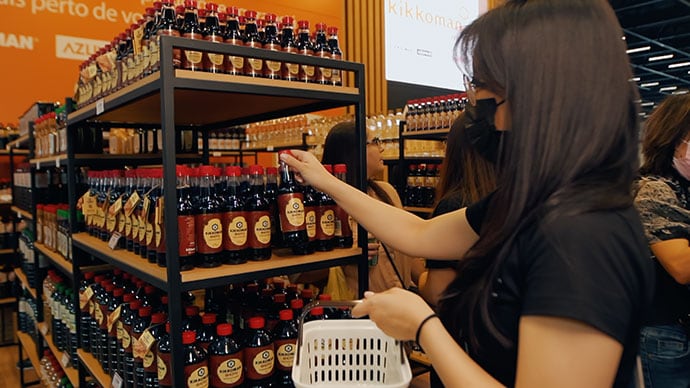
Kikkoman Soy Sauce sold in South America has been imported from the U.S. or Singapore.
Prior to a full-scale entry into Brazil, market research was conducted on the imported soy sauce. With the development of new seasonings well-suited to South America, in 2018, Kikkoman started contract producing and sales of its soy sauce-based products.
In 2020, Kikkoman established a corporation dedicated to producing and marketing its products, signifying its full-scale entry into the market. In the following year, Kikkoman started distributing soy sauce produced at the plant in Brazil, Kikkoman’s 8th production hub overseas. Through marketing efforts, including collaborative recipe development with renowned local chefs, Kikkoman is promoting its brand in Brazil and showcasing the allure and deliciousness of Kikkoman Soy Sauce with Brazilian meals.
“Molho de Soja” Tailored to Brazilian Taste
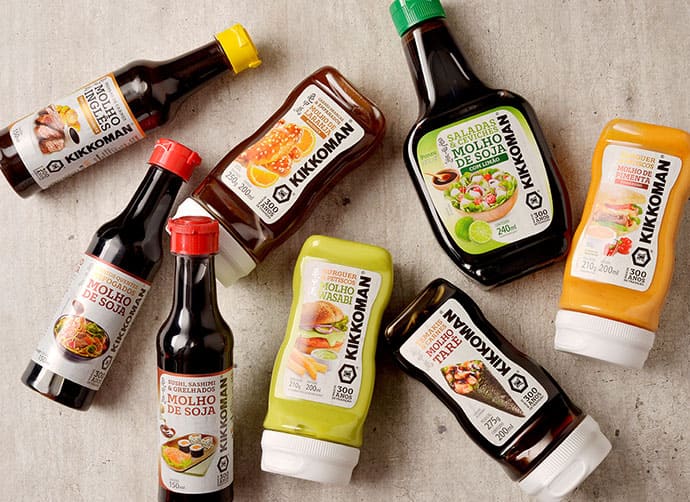
Brazil, known as the economic giant of South America, has a deep-rooted connection between its Japanese immigrant history and the tradition of soy sauce, which has contributed to the popularity of soy sauce among Brazilians. However, most of the soy sauce available in Brazil is made with soybeans and corn as main ingredients, which tastes a lot different from Kikkoman Soy Sauce made from soybeans and wheat. The difference has made it difficult for Kikkoman to penetrate the market and prevented them from establishing a strong presence over an extended period.
Therefore, Kikkoman developed seasonings tailored to the local palate. The first product introduced to the market was “Molha de Soja,” a sweet soy sauce-based seasoning with sugar mixed in.
Kikkoman has been delivering new flavor suited to the Brazilian taste, while communicating the value of “Honjozo” (traditionally brewed) soy sauce made from soybeans and wheat, and continuing to develop new products aligned with the local needs.
Sales Center
| Address | Av. Paulista, 1274- 21° andar Bela Vista -São Paulo- SP, CEP 01310-925,Brasil |
|---|---|
| Tel | +55-11-3283-0733 |
Production Center
| Address | Romeu Túlio, Túlio, R. Walter Franco de Lima, 105, Campinas - SP, CEP 13099-105, Brasil |
|---|---|
| Tel | +55-19-3257-1245 |
Origin and Development of Business
Starting with a Teppanyaki Restaurant
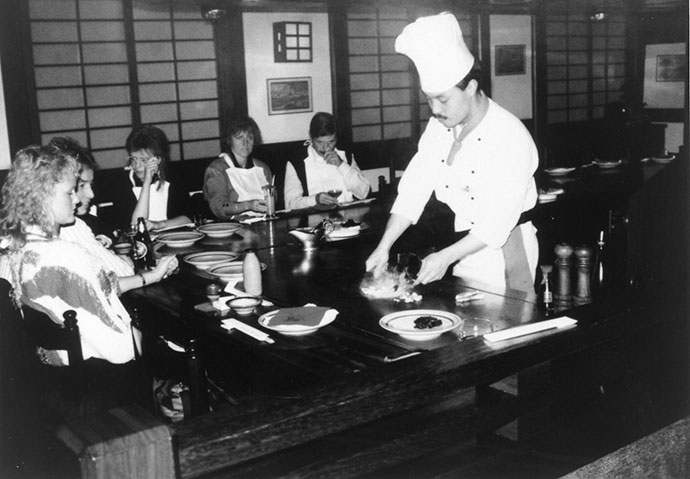
In Europe, Kikkoman’s journey started in 1973 with the opening of “DAITOKAI Düsseldorf,” a teppanyaki restaurant. By allowing customers to see their food being cooked right in front of them, the intention was to provide a multi-sensory experience for them to enjoy the exquisite taste of Kikkoman Soy Sauce.
As interest in soy sauce grew, in 1979, Kikkoman established a marketing company in Germany and launched a full-scale marketing campaign across Europe. European countries gradually embraced Kikkoman Soy Sauce after Kikkoman effectively advertised the undiscovered flavors and new value it adds, all while respecting the European food culture, similar to their marketing efforts in the United States. In 1996, the first production hub in Europe was established in the Netherlands, and they started distributing Kikkoman Soy Sauce made in Europe in the following year.
“Soja Sauce Sucrée” Tailored to French Palates
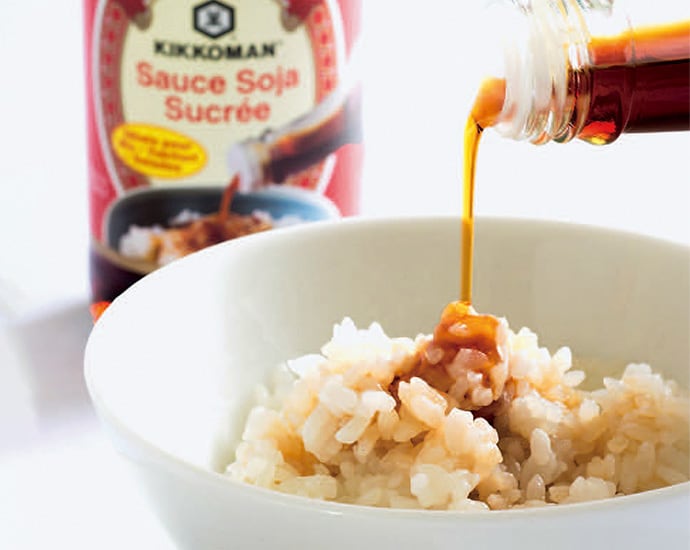
Europe boasts a rich history and diverse food cultures across countries and regions. By developing soy sauce-based seasonings well-suited to the local palate, Kikkoman successfully expanded its market presence and gained widespread brand recognition.
One of such products is Soja Sauce Sucrée, a sweet soy sauce launched in France in 2007. Inspired by the sight of French people enjoying white rice with a sweet sauce at Japanese restaurants in Paris, Kikkoman developed this product primarily for the French market.
‘Sucrée’ means sugar in French. Besides the self-explanatory product naming, the bottle label has a picture of the sauce being poured onto white rice, which clarifies the intended usage. Soja Sauce Sucrée well-suited to the local palate became available in stores shortly after. This sauce was launched in the other European countries with a different name and became a popular product.
Sales Center
| Address | Theodorstrasse. 180, 40472 Düsseldorf, Germany |
|---|---|
| Tel | +49(211)5375940 |
Production Center
| Address | De Vosholen 100, 9611 TG Sappemeer, The Netherlands |
|---|---|
| Tel | +31(598)399898 |
R&D and Product Development Center
| Address | Theodorstrasse 180, 40472 Düsseldorf, Germany |
|---|---|
| Tel | +49(211)52288450 |
| Address | BioPartner Center, Nieuwe Kanaal 7G, 6709 PA Wageningen, The Netherlands |
|---|---|
| Tel | +31(317)420370 |
Oceania
Origin and Development of Business
Kikkoman Soy Sauce in Harmony with Oceania’s Food Culture
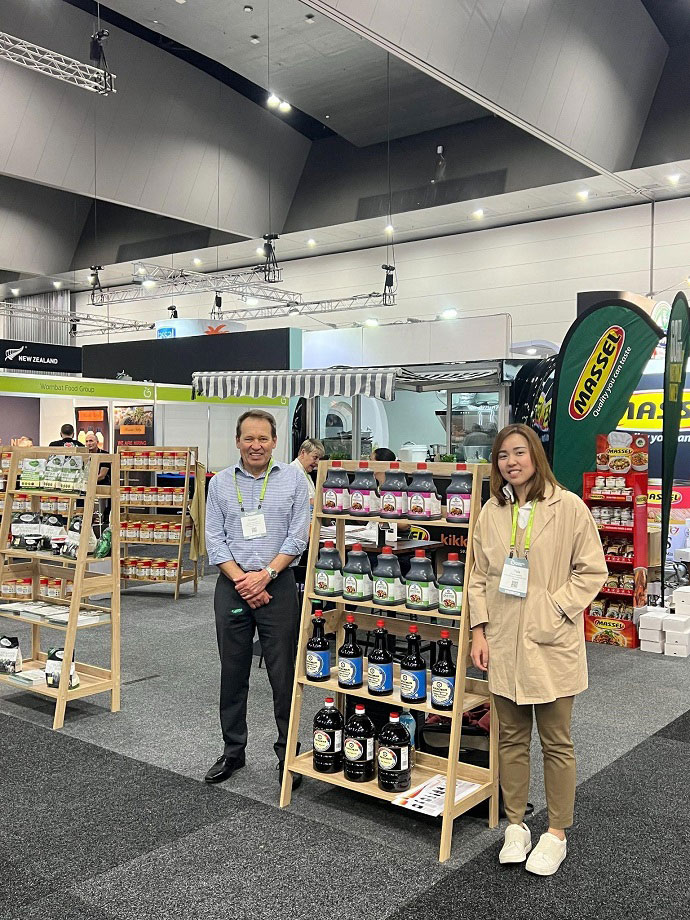
Continuing the success of North America and Europe, Kikkoman entered the Australian market and increased its export volume smoothly. Soy sauce found a warm reception as a meat seasoning, perfectly complementing Australia’s BBQ culture and frequent consumption of beef and lamb. With its abundant seafood resources, Australia found soy sauce to be an ideal seasoning that harmonized with its diverse food culture.
In 1980, Kikkoman established its Oceania marketing company in Sydney, Australia. As the market continued to expand, Kikkoman completed the construction of its Singapore plant in 1984, which started operating as the key export hub for the Asia and Oceania regions and exported to Australia. As sales gained momentum, the market share of Kikkoman, especially its soy sauce and Teriyaki sauce, has expanded year after year. By 1988, the market share in Australia reached 50% and continued to grow thereafter.
Expanding the Product Lineup with Gluten-Free Products
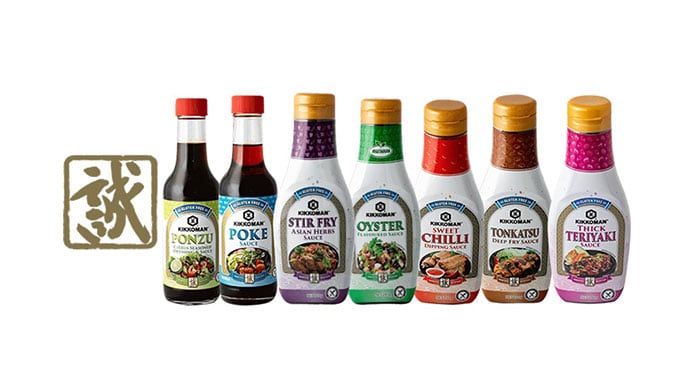
Given the considerable demand for household use in Australia, Kikkoman placed an emphasis on expanding its product lineup. Kikkoman has successfully strengthened its brand recognition by introducing a diverse range of soy sauce products, including gluten-free, organic, tamari, sushi & sashimi soy sauce, and Teriyaki sauce.
In order to meet the growing demand for gluten-free products in recent years, Kikkoman released the Makoto-range seasoning consisting of gluten-free products only, featuring a diverse selection including “Ponzu” (citrus seasoned soy sauce), “Tonkatsu” sauce (sauce for Japanese-style breaded pork cutlets), vegetarian oyster sauce and more.
Sales Center
| Address | Suite 3, Level 19, 111 Pacific Highway, North Sydney N.S.W. 2060 Australia |
|---|---|
| Tel | +61(2)9923-2533 |
South East Asia
Origin and Development of Business
Expansion to Southeast Asia with Unique Sauce Culture
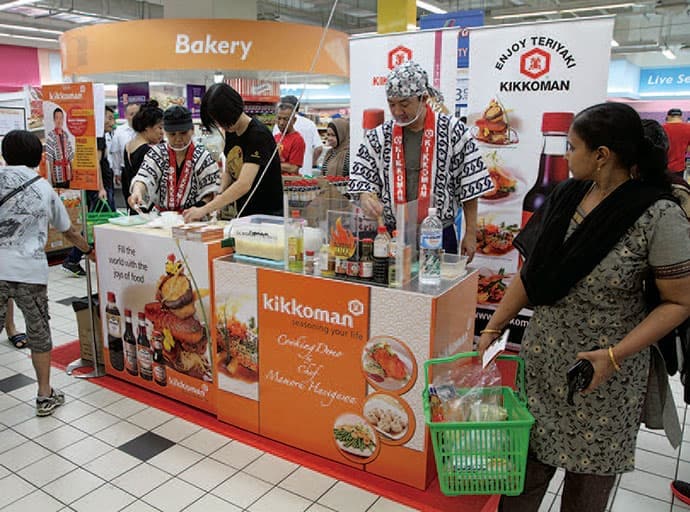
After the establishment of the Singapore plant as an export hub for Asia and Oceania in 1984, Kikkoman began shipping Kikkoman Soy Sauce produced at the plant. In 1990, a marketing company was founded in Singapore to facilitate business expansion in Southeast Asia, particularly in the vicinity of Singapore.
In Southeast Asia, where fish sauce made from fermented seafood has been widely used since early times, it was initially anticipated that Japanese soy sauce would be embraced in a similar manner. However, it turned out each of the Southeastern Asian sauce has a distinct flavor unique to its regional cuisine. While Kikkoman Soy Sauce has become a common seasoning that goes well with their local dishes or ingredients in North America and Europe, the situation was different in Asia.
In 2001, Kikkoman began opening offices in Singapore, Thailand, and the Philippines, recognizing them as key markets, aiming to develop and promote products optimized for each market. As part of its brand promotion efforts, Kikkoman provides “shokuiku” (food education) programs for students at culinary schools, who are the future customers. These programs feature cooking demonstrations and contests, allowing participants to explore the distinctions between Kikkoman Soy Sauce and region-specific fermented seasonings, while uncovering Kikkoman’s secrets behind its delectable flavor.
Embracing the Soup and Hot Pot Culture
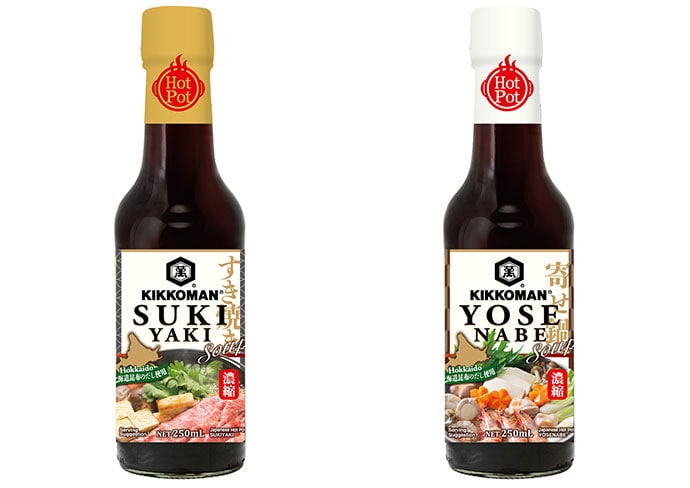
In contrast to the meat-centric Western diet, Southeast Asian cuisine places a greater emphasis on consuming rice, noodles, and vegetables. To better suit the preference of Southeast Asian consumers, Kikkoman developed and introduced its hot pot sauce series (Yosenabe and Sukiyaki) in 2020. These products are in harmony with their vegetable-rich diet and hot pot & soup culture. Activities to gain recognition from more consumers include photo contents and communication through social media platforms.
Sales Center
| Address | 600 North Bridge Road, #16-01, Parkview Square, Singapore 188778 |
|---|---|
| Tel | +65(6235)6022 |
Production Center
| Address | 7 Senoko Crescent, Singapore 758263 |
|---|---|
| Tel | +65(6758)8822 |
R&D and Product Development Center
| Address | 600 North Bridge Road, #16-01 Parkview Square, Singapore 188778 |
|---|---|
| Tel | +65(9753)0140 |
| Address | 11 Biopolis Way, #05-01 Helios, Singapore 138667 |
|---|---|
| Tel | +65(6774)6061 |
East Asia
Origin and Development of Business
Marketing in East Asia Partnered with the Local Corporations
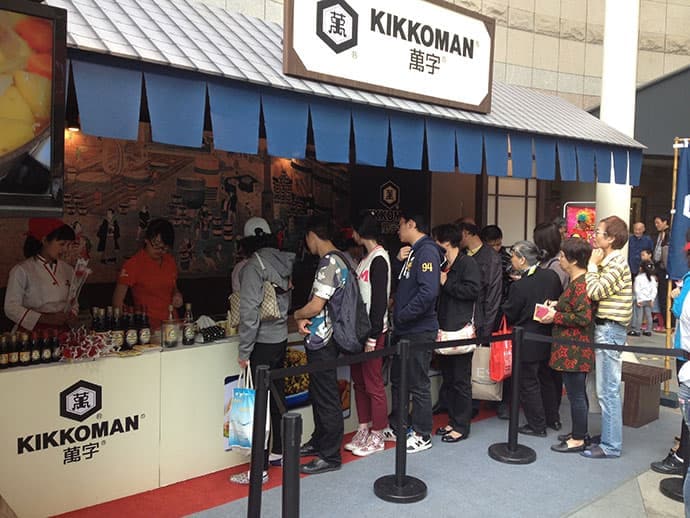
Kikkoman has made steady progress in expanding its presence in the East Asian market.
In China, a country experiencing remarkable economic growth, there is a growing demand for high-value-added products in the seasoning market, including soy sauce.
In 1990, Kikkoman formed a joint venture with Taiwan’s largest food manufacturer, to build a plant and sales center in Tainan. The partnership with the group continued with the establishment of two production and sales centers to supply mainland China in the 2000s.
Kikkoman Soy Sauce penetrated these markets as a high-quality seasoning.
“甘醇醤油” Key Product in Taiwan
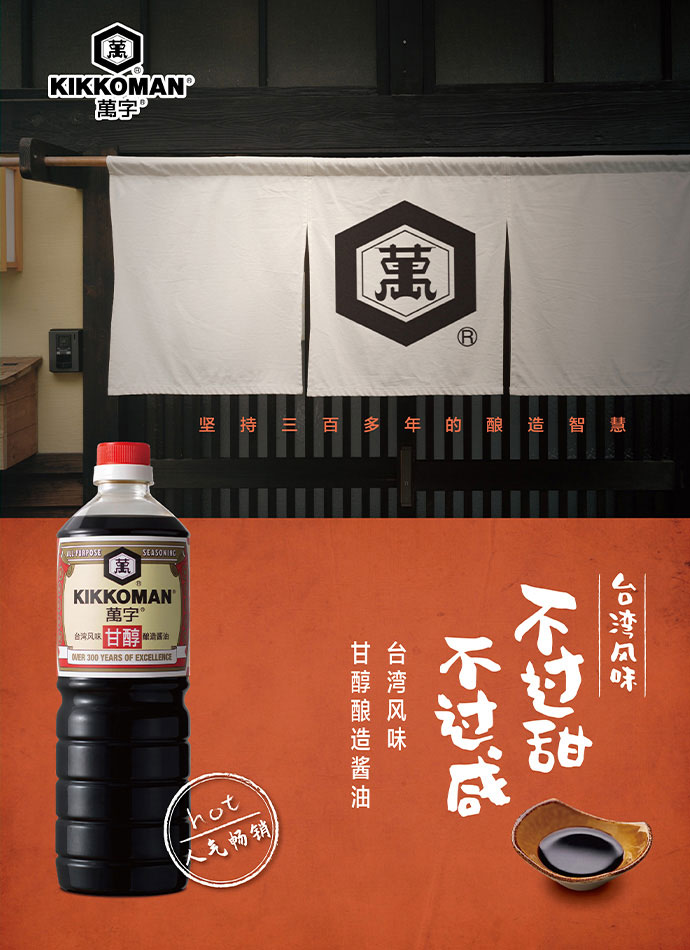
Kikkoman successfully entered the Taiwanese market by launching the sweet soy sauce ”甘醇醤油”. It was specially crafted to suit the Taiwanese taste by adding sugar and umami ingredients to “Honjozo” (traditionally-brewed) Soy Sauce.
As part of the PR campaign, a commercial featuring Taiwanese talents was aired on TV with a catchphrase “醍醐味,” which translates to “real pleasure”. After using this “醍醐味” catchphrase consistently with product labels and promotions like this TV commercial, by the mid-2000s, majority of people in Taiwan associated this term with Kikkoman. “甘醇醤油” became a popular product and is now available in mainland China as well.
Sales & Production Center
| Address | No.7, Daying, Daying Village, Sinshih District, Tainan City 74443, Taiwan, R.O.C. |
|---|---|
| Tel | +886(6)5997995 |
| Address | 301 South of Qingyang Road, Economy and Technical Development Zone, Kunshan City, Jiangsu Province, 215300 China |
|---|---|
| Tel | +86(512)5770-6146 |
Sales Center
| Address | Room626, YiJiaFang Business Center A-tower, 165, TianShan West-road, Changning District, Shanghai, 200335 China |
|---|---|
| Tel | +86-21-51021533 |
Production Center
| Address | Tianli Office Building, No. 34 Guang An Street, Shijiazhuang City, Hebei Province, 050011 China |
|---|---|
| Tel | +86(311)6802-3830 |
| Address | No.230 west of Shi Ta Road, Zhao Country, Shijiazhuang City, Hebei, 051530 China |
|---|---|
| Tel | +86(311)8965-0311 |
India
Origin and Development of Business
Full-Scale Entry into India
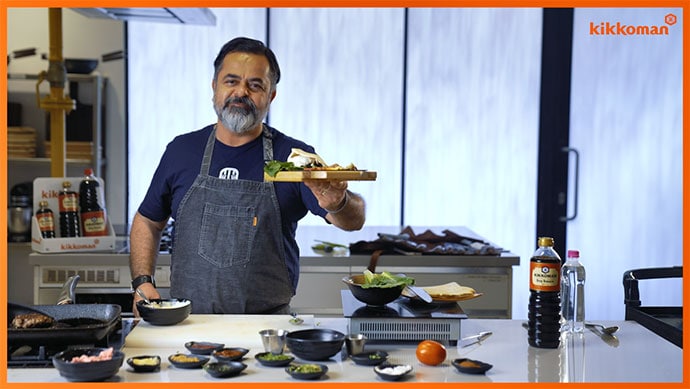
In February 2021, Kikkoman established a marketing company locally and entered the Indian market officially.
To penetrate Kikkoman Soy Sauce into the market, it was crucial to demonstrate how it can be used in cooking to enhance the flavor of local ingredients. Various promotions are being carried out in India, known for its spice-rich cuisine, to communicate the value of “Honjozo” (traditionally-brewed) soy sauce.
These promotions include collaborations with renowned chefs from major cities in India, creating recipes that showcase different cuisines, including Indian dishes. The new recipes are published on Kikkoman India’s Instagram page. The recipes vary from authentic restaurant dishes to easy meals to make at home.
Kikkoman will continue to promote “Honjozo” (traditionally-brewed) soy sauce throughout India by hosting events and developing more soy sauce-based products tailored to local needs.
Kikkoman Oyster Flavoured Sauce - A Specialty Sauce for Indian Chinese cuisine
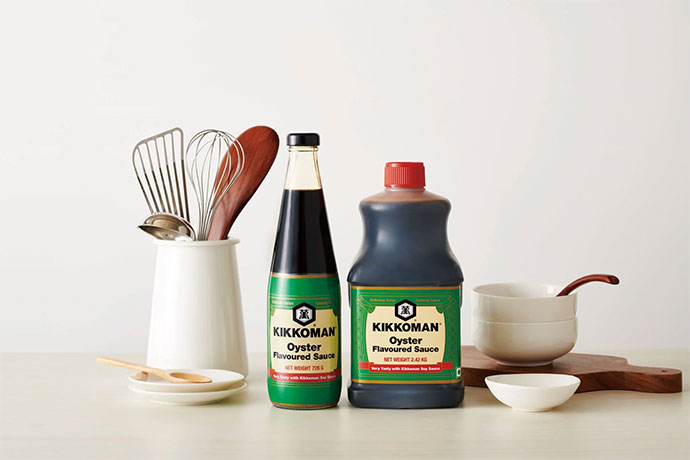
Primarily in major cities of India today, a culinary fusion known as “Indian Chinese,” Indian-style Chinese food infused with spices, has been gaining popularity. In 2022, after two years of research and development, “Kikkoman Oyster Flavoured Sauce” was launched in India. This unique oyster-flavored seasoning is vegetarian and free from any chemical seasonings or additives. While being carefully crafted to suit the Indian taste, Kikkoman Soy Sauce is used as a secret ingredient.
Kikkoman India will continue to develop more products that better suit the needs of consumers in India.
Sales Center
| Address | 4th Floor, A wing, Dynasty Business Park, Andheri Kurla Road, Chakala, Andheri East, Mumbai 400059 India. |
|---|---|
| Tel | +91-7045-666-888 |
